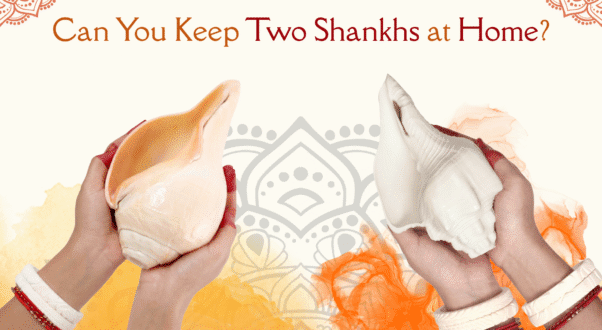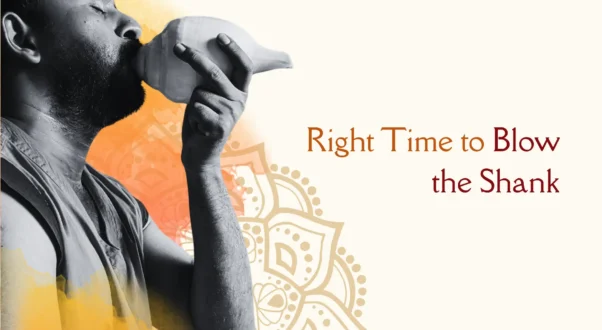
Community, Culture & Connection: Reviving the Ancient Practice of Shankh Naad
Talking about the Indian subcontinent, the deep and resonant sound of the Shankh or the conch shell has been a part for ages. It’s commonly known as the Shankhnaad—that’s an ancient practice which is far more than ceremonial sound.
The sound resembles the cosmic vibrations of space, as Om, which carries profound spiritual, cultural and communal significance. Shankhnaad is experiencing a revival, connecting modern communities to ancestral roots.
The Symbolism of the Shankh
It has been reserved in Indian traditions since ancient times. It upholds the sacred place in Hindu mythology and iconography. Often seen in the hands of deities like Lord Vishnu, Goddess Lakshmi, and more. The Shankh represents infinity, continuity and the cyclical nature of life.
It’s considered with blowing of Shankh before rituals, battles or celebrations; that invoke divine energy, ward off the negativities and purify the environment with positivity. It marked the transition from the mundane to the sacred, helping focus the mind and align energies before significant events.
Shankh as a Cultural Connector
Shankhhnaad sound is a traditionally collective call to gather. From villages to temples and communities, getting togetherness is widely used. For ages, the Shankh Instrument has been used for blowing to signal the start of festivals, ceremonies and prayer sessions because its deep vibrations can be heard even miles away.
In an era of digital developments and artificial sounds, many still dominate Shankh Sound Audios to start the day, as it reminds us how sound brought people together in harmony. The simple act of listening to the Shankh can evoke a sense of belonging and shared identity rooted in culture.
The Science Behind the Sound
Considering that Shankh light isn’t good because it’s all deeply spiritual, but with a scientific dimension. It helps in producing the low-frequency sound waves that connect the inner soul with peace and calmness, adding positivity to the environment. These vibrations can have a calming and grounding effect on the nervous system.
Today, the modern sound therapies are recognising Shankhnaad as the Sound Healing mind by reducing stress, regulating breathing, promoting wellness and inducing a meditative state. Similar to Tibetan singing bowls or gongs, the Shankh’s vibrations are now being studied for their therapeutic potential in sound healing practices.
Blowing the Shankh also engages the lungs and diaphragm, helping to strengthen respiratory muscles and improve lung capacity. This was especially valued in earlier times when physical vigour was crucial for daily life.
Shankh Naad in Spiritual Rituals
Indian temples continue to blow Shankh as they hold sacred places in religious rituals. It’s blown as the start of aarti or puja ceremonies to announce the presence of the divine energies around. The sound of Shankh is believed to cleanse the surroundings and create a spiritual shield, preparing the mind for prayers.
Many families in India also keep a Shankh at home and blow it during prayers and ceremonies. It’s a regular practice in the home to make vibrations energetic, positive and prosperous. It aligns with the broader Indian philosophy that sound carries sacred energy capable of influencing the environment.
Revival in Modern Wellness Spaces
Recently, there has been a surge in interest in ancient wellness tools and Sound Healing therapies, which then enters the Shankh as the emerging trend. From yoga studios to meditation centres and holistic wellness retreats, Shankhnaad sessions are part of the offerings.
Reconnecting With Cultural Heritage
Apart from wellness benefits, the blowing of Shankh is also a cultural reclamation. It’s a deep way to reconnect with ancestral traditions, creating a tangible link to heritage with a sense of pride and continuity. The Shankhnaad in events and celebrations symbolises its unity, collective strength and echoing. It’s not only the spiritual uplifting but also powerful cultural statements.
The Shankh as an Instrument of Intention
Shankh Instrument is more than an object to be blown. It’s even used to keep people focused, engaged and within a set purpose. Shankh-naad is a gratitude healing, and invoking the divine blessings—thus intentionally turning the act into a ritual, allowing sound carrying emotions, spirituality, positivity and more.
A Sound of Unity and Hope
The blowing of Shankh is an ancient practice, but in modern society it shares deeper meanings to heal, reconnect and feel relaxed. Shankh sound offers moments of collective stillness and positive energies that foster emotional connection in communities and workplaces alike. Shankh Sound Audio is a call for soulfulness that stands out—fills you with silence, peace and deep relaxation. This is why its revival matters: it reconnects us not only to heritage, but to each other.
The Final Verdict
When it’s about the deeper sense of purity and reviving connections, Shankhnaad gives the vibrations that are comparable to cosmic energies. From anciently followed cultural rituals to modern wellness practices, the blowing of Shankh is widely followed.
It’s not only a Sound Healing inner soul offering peace and calmness, but even benefits the respiratory organs & breathing. The sound of Shankh when blown also connects the soul with positive energies, luck, success and prosperity. The practice of blowing the conch shell in daily puja or aartis, celebrations and other rituals focuses on reconnections with cosmic vibes in the surroundings.
FAQs
Q1. What is the meaning of Shankh Naad?
Shankh Naad refers to the sound produced by blowing a conch shell (Shankh). It is considered sacred in Indian traditions and symbolises the divine cosmic vibration ‘Om.’ It is used in religious rituals and is believed to purify the environment and elevate spiritual energy.
Q2. Can anyone practice Shankh Naad?
Yes, anyone can practice Shankh Naad. While it takes a bit of practice to blow the Shankh properly, there are no restrictions based on age or background. It is recommended to learn from someone experienced to understand the right technique and posture.
Q3. Is Shankh Naad used in modern wellness practices?
Absolutely. Many yoga studios, meditation retreats, and sound healing practitioners now include Shankh Naad in their sessions. The vibrations produced are believed to calm the mind, improve focus, and promote emotional balance.
Explore insights from Kalari Warriors, blending ancient Kalaripayattu traditions with spiritual craftsmanship to enrich your life and rituals.




